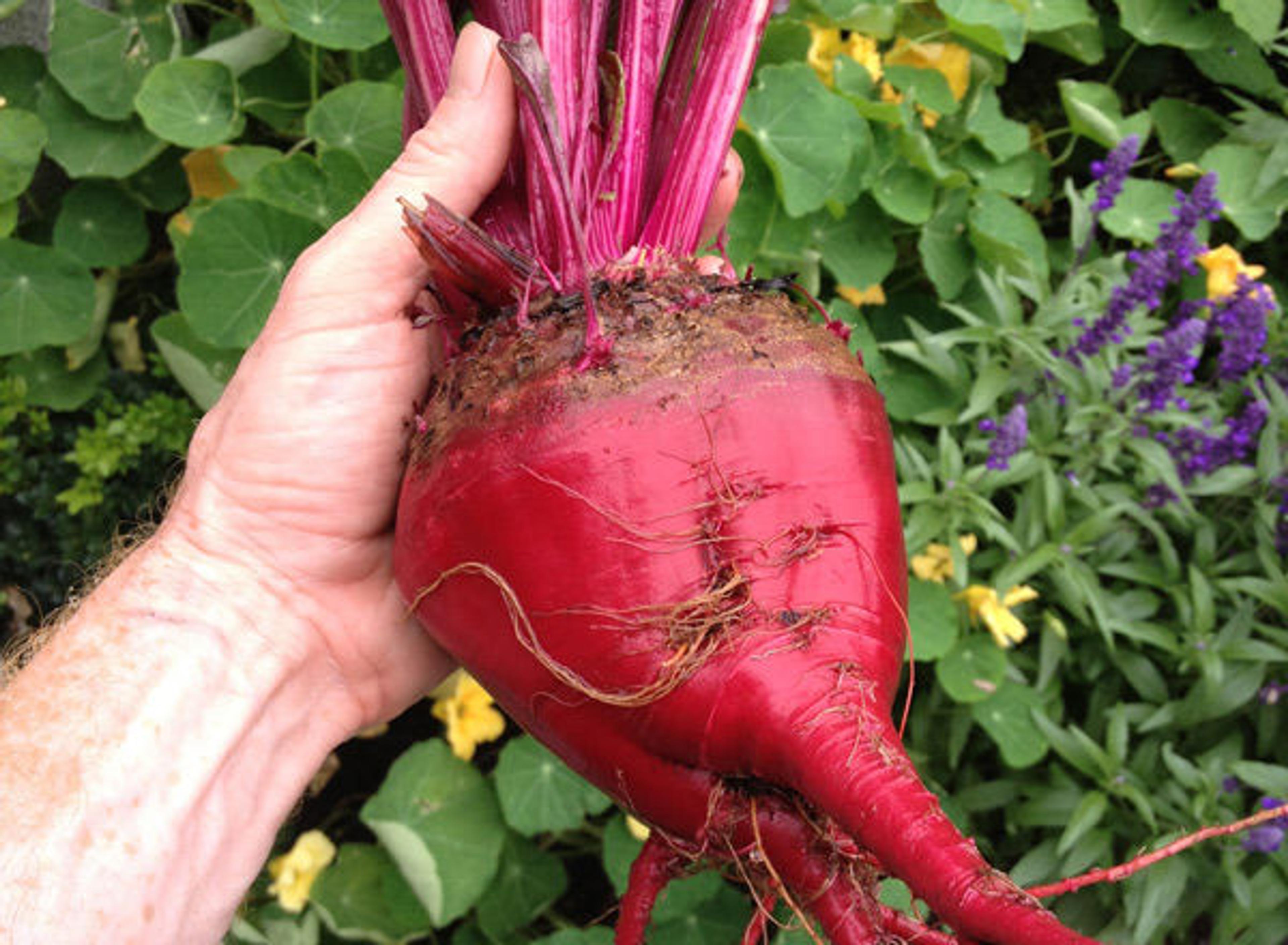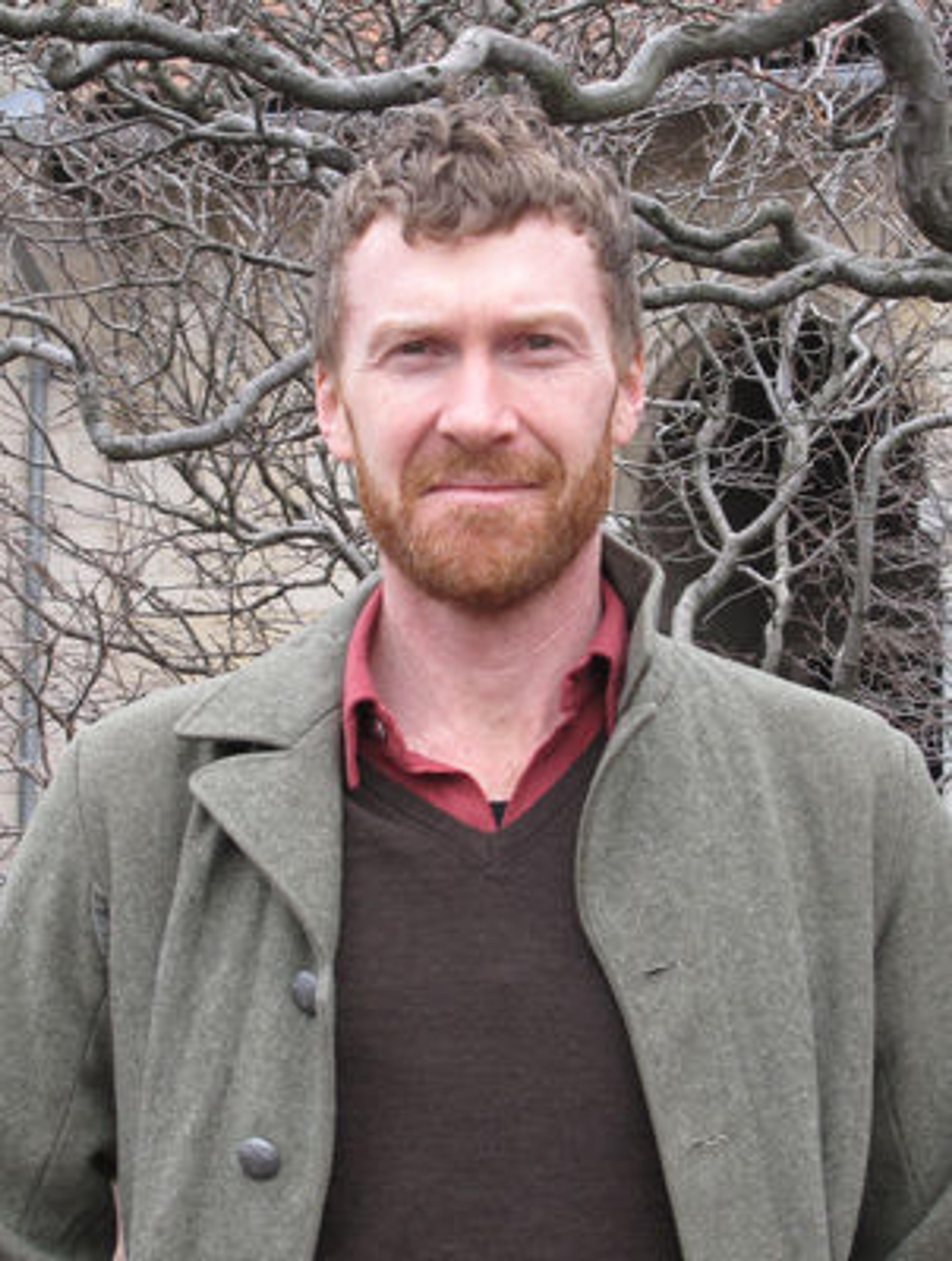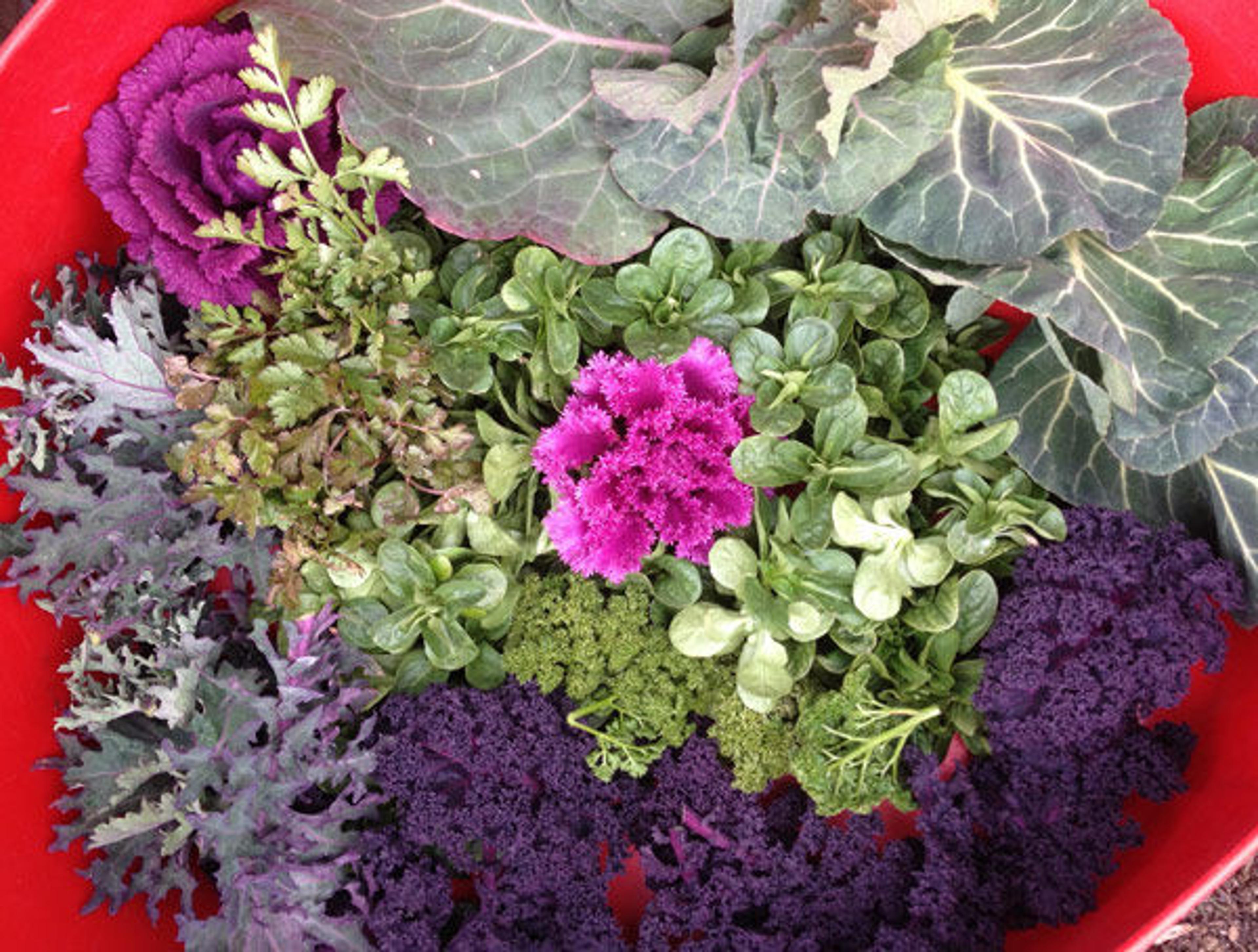
A beet root (Beta vulgaris ssp. vulgaris) and the author's hand
«As I sat down to write a post to introduce myself, I began to pursue a topic that had been forming in my mind the week I accepted the position as managing horticulturist here at The Cloisters museum and gardens: the spread of horticultural knowledge and plants throughout medieval Europe. There is ample evidence of a thriving nursery trade and seed exchange at this point in time. Horticultural techniques and knowledge, primarily passed down orally, proliferated in monasteries. These solitary communities served as repositories of learning, safeguarding, and practicing the science and art of horticulture.»
My prior garden, the Brooklyn Botanic Garden's Herb Garden, showcased the global origins of the plants that comprise our modern diet. We grew as wide a variety of the world's crops as Brooklyn's climes would allow. Visitors passing through the gardens shared how they used plants "back home," which, for visitors to a botanic garden in New York, represented many diverse countries and culinary traditions. In my experience, few vocations engage and elicit advice from people more than horticulture. Perhaps it is the act of gardening that spurs a deep curiosity and desire to share. Perhaps it is the plants themselves and their offerings that foster the collector's habit. Regardless of the cause, people have been moving plants and developing and sharing horticultural skills for a long time.

Left: Caleb Leech, the new managing horticulturalist at The Cloisters
Take, for example, the wild sea beet (Beta vulgaris ssp. maritima), which grows wild along the shores of the Mediterranean Sea and the European North Atlantic coastline. While the lime-green leaves of the sea beet are markedly different from modern cultivars in appearance, the variety is the progenitor of our ruby red chard and the richly pigmented, sweet, bulbous roots that grace our table. We know that the beet has been highly regarded as a leafy vegetable from antiquity. Swiss chard (Beta vulgaris ssp. cicla), for instance, was selected and prized for its aerial parts, and Aristotle remarked upon its vivid leaves. By the Middle Ages, there is ample evidence of its being cultivated for its roots. At what point did the gardener or forager first discover their sweetness? And, upon this discovery, share them with a neighbor or an itinerant traveler who carried the seeds to distant lands?
Or take wild cabbage (Brassica oleracea), another maritime plant found growing along Europe's coasts. Cabbage has been important since classical antiquity; the Romans used it for many reasons, including as the base for a broth to cure hangovers. Many of its cultivated varieties, including Brussels sprouts and kohlrabi, likely originated or became widely dispersed during medieval times.

Leaves of the wild cabbage (Brassica oleracea), located at the top of the photograph, alongside curly kale, cilantro, parsley, and mâche
As the newest transplant to this cloistered, leafy oasis in northern Manhattan, I thought plant migrations and the spread of horticultural knowledge a fitting subject. Leaving Brooklyn after almost a decade was exciting but also prompted a certain amount of reflection. My career choice as a gardener necessitated that I stay put. I tended a garden throughout the seasons, finding nature's rhythms amid the city's cacophony. But, seeking new challenges and an abiding appreciation of this Museum, I uprooted. Ferrying seeds and knowledge gained from the Brooklyn Botanic Garden, I landed at The Cloisters to learn a new plot of soil and pursue a new direction and body of knowledge.
As I began my research, I found it incredibly illuminating to discover how broad medieval horticulture is as a subject. Plant migrations are vast; from the Crusades to the thriving spice trade, plants were well on their way to their global reach by the Middle Ages. As the newest horticulturist for The Cloisters, I am excited and humbled to continue this exploration, and I look forward to sharing a little of what I learn along the way with our visitors.